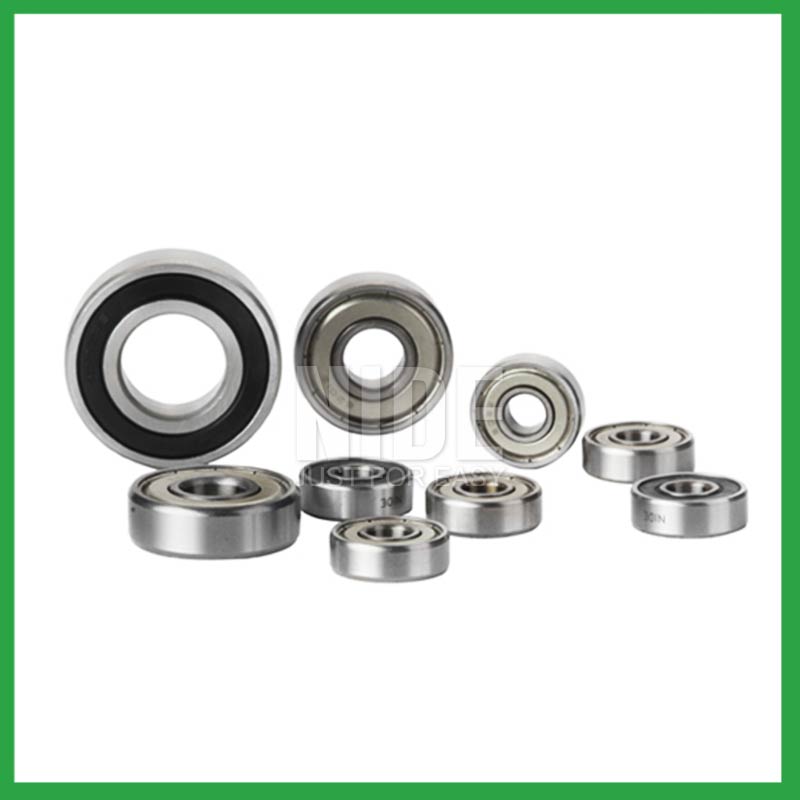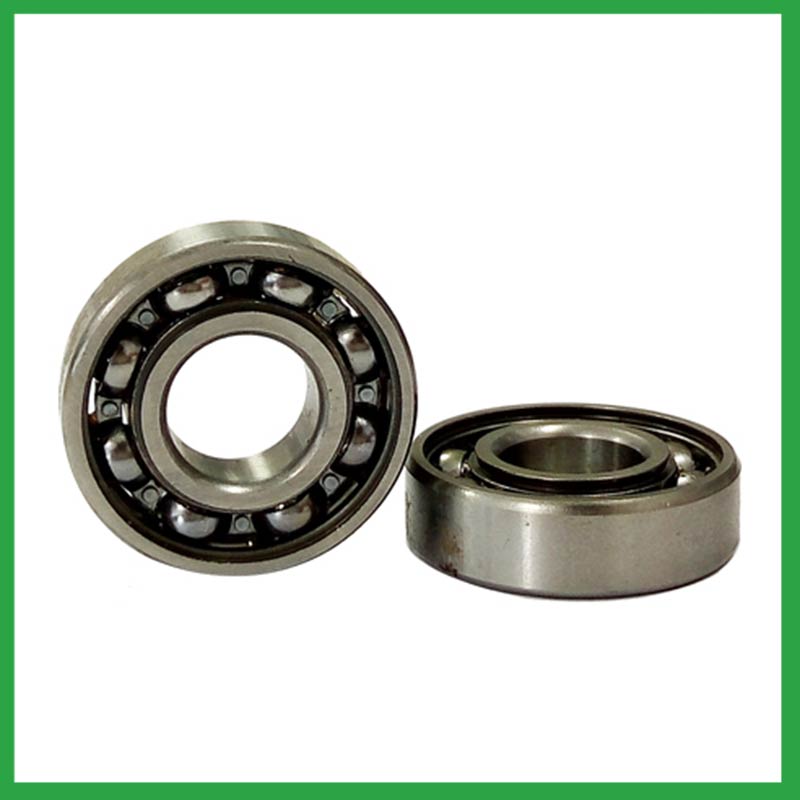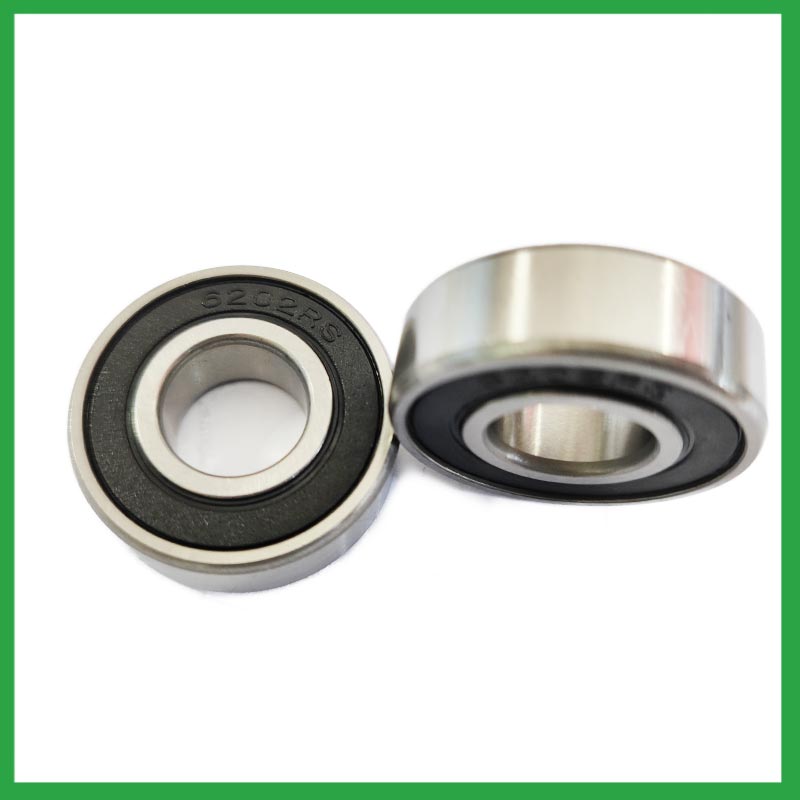PRODUCTS
CONTACT US
Ningbo Nide International Co., Ltd.
一一
· Contact person:Jack Zeng
· Mob/Whatspp/WeChat:0086-13738869026
· Email:emarketing@nide-group.com;marketing4@nide-group.com
· Add:No. 169, Wohushan Road, Daqi Subdistrict, Beilun District, Ningbo, China

Nide team could manufacture ball bearing as per customer’s drawing and samples.
If customer only has samples, we could also design drawing fo r our customer.
We also provide customized service.
Our ball bearing is widely applied the different industrials.
Haishu Nide International was established in 2010. We produce commutator,thermal protector,motor cover and lamination,ball bearing,fan,magnet,insulation paper and other products. Our unwavering commitment to quality has been recognized by the National Testing Center and the Zhejiang Provincial Testing Center. We adhere to ISO 9001:2015 and CE statior standards, prioritize quality, and operate with integrity.
We prioritize quality and first-class service, constantly pursuing perfection. We have a deep understanding of the precise needs of our customers, and our important motor component manufacturing network and strict quality control system enable us to provide high-quality products to customers at reasonable prices.

| Parameter | Information |
|---|---|
| Product Name | fidget ball bearing spinner |
| Brand Name | NIDE |
| Place of Origin | Ningbo,China |
| Material | stainless steel, etc. |
| Structure | Deep Groove |
| Color | Customized Color |
| Delivery Time | 5-7days |
| Port | Ningbo/Shanghai |
| Export region | America,Europe,Asia |
| Export Country | India,Brazil,South Korea,Europa Island,Saint Kitts and Nevis,Tonga,Aruba...etc |
| Application | automotive engines,machine tools, etc. |
| OEM/ODM | Support |
| Size | Customized size |
| Stock | In Stock |
| Feature | Low Noise,Strong carrying capacity...etc |
| MOQ | 10 pieeces(Specific according to the model) |
| Certification | ISO9001,CE-stator coil winding machine,CE-insulation paper inserting machine,etc |
| Supply Ability | 100000-500000 Piece/Pieces per Month |
| Lubricate | Oil Grease |
| Packaging Details | Suitable for sea transportation |
| Lead time (days) | 15-20 (To be negotiated) |
Please note: The above table data is for reference only. For specific information, please contact us.
fidget ball bearing spinner have the advantages of lightweight,durability,low friction coefficient,compactness, and high load, and are used in main motion mechanisms and components, such as motors,automotive drive components,resistors, different motion mechanisms and accessories of airplanes and motorcycles.
During the installation process, pollution from dirt and wear media should be prevented;
Temperature and humidity should be controlled to avoid excessive temperatures during startup and operation;
It should be operated and lubricated in the correct reverse direction to avoid unnecessary damage.
Ball bearings have many advantages, making them highly competitive in the market.
Firstly, they are very durable and have good wear performance, making their service life longer than many other types of bearings.
Secondly, they are easy to install and can provide low friction performance in various applications.
Thirdly, they require a relatively low level of maintenance, making them cost-effective.
In addition, compared to many other types of bearings, their purchase cost is relatively low, making them an economical choice.




fidget ball bearing spinner---FAQs Guide
2.How do different fidget ball bearing spinner designs, such as deep groove, angular contact, or thrust bearings, cater to specific applications?
3.Are there ongoing research and development efforts aimed at improving fidget ball bearing spinner materials, designs, and lubrication techniques?
4.What is the load distribution within a fidget ball bearing spinner, and how does it vary between different bearing configurations?
5.What is a ball bearing?
6.Can fidget ball bearing spinner operate in high-speed applications, and what design features make them suitable for such conditions?
7.Are there fidget ball bearing spinner designed for extreme temperature environments, such as cryogenic or furnace applications?
8.What are the considerations for choosing between open, shielded, or sealed fidget ball bearing spinner in specific applications?
9.Can fidget ball bearing spinner be used in both vertical and horizontal orientations?
10.How do manufacturers ensure the quality and reliability of fidget ball bearing spinner through material selection and precision machining?
11.How do cage designs affect fidget ball bearing spinner speed and acceleration capabilities in high-speed machinery?
12.How do cage materials and designs impact fidget ball bearing spinner performance and stability?
13.Can fidget ball bearing spinner be used in vacuum or cleanroom environments, and what measures are taken to prevent outgassing or contamination?
14.As a fidget ball bearing spinner manufacturer,Your product certifications?
1.Are there self-aligning fidget ball bearing spinner that accommodate misalignment and shaft deflection in rotating equipment?
These fidget ball bearing spinner are particularly suitable for applications where misalignment can arise from errors in mounting or shaft deflection. A variety of designs are available with cylindrical and taper bores, with seals and adapter sleeves and extended inner rings.
2.How do different fidget ball bearing spinner designs, such as deep groove, angular contact, or thrust bearings, cater to specific applications?
Deep groove fidget ball bearing spinner: Deep groove ball bearings are the most common type. They can handle both radial and axial loads. Angular contact ball bearings: Angular contact ball bearings have higher than average internal axial clearance. They can handle axial loads in one direction and moderate radial loads.
3.Are there ongoing research and development efforts aimed at improving fidget ball bearing spinner materials, designs, and lubrication techniques?
A custom fidget ball bearing spinner can satisfy almost any customer’s needs. Your application may need a needle roller or ball bearing, a radial or angular contact design, a plain carbon steel bearing with anti-corrosion coatings or stainless steel, a thrust bearing or a spherical bearing, tight or loose radial play, sealed or non-sealed designs
4.What is the load distribution within a fidget ball bearing spinner, and how does it vary between different bearing configurations?
The load distribution between the rolling elements and raceway is crucial in performance evaluation of rolling element bearings. Determine the load distribution by measuring the strain response at the bearing surface with a notched housing. Finite element analysis shows that the introduction of notches does not affect the load distribution. An experimental system was developed to investigate the load distribution in a cylindrical roller bearing. The experimental static load distribution agrees well with the theoretical calculation. The dynamic load at specific position of load zone reflects the manufacture difference among rollers and dynamic balance of distributing loads.
5.What is a ball bearing?
A ball bearing is a type of rolling-element bearing that uses balls to maintain the separation between the bearing races.
The purpose of a ball bearing is to reduce rotational friction and support radial and axial loads. It achieves this by using at least two races to contain the balls and transmit the loads through the balls. In most applications, one race is stationary and the other is attached to the rotating assembly (e.g., a hub or shaft). As one of the bearing races rotates it causes the balls to rotate as well. Because the balls are rolling they have a much lower coefficient of friction than if two flat surfaces were sliding against each other.
Ball bearings tend to have lower load capacity for their size than other kinds of rolling-element bearings due to the smaller contact area between the balls and races. However, they can tolerate some misalignment of the inner and outer races.

6.Can fidget ball bearing spinner operate in high-speed applications, and what design features make them suitable for such conditions?
They have very low rolling friction and are optimized for low noise and low vibration. This makes them ideal for high-speed applications. fidget ball bearing spinner are comparatively easy to install and require minimal maintenance.
7.Are there fidget ball bearing spinner designed for extreme temperature environments, such as cryogenic or furnace applications?
High temperature fidget ball bearing spinner use specialized lubricants to stand up to high temperatures. Grease-packed bearings are pre-filled with fluorine grease for high temperatures, while YS and SJ bearings use molybdenum disulfide (MoS2) solid lubricant to withstand temperatures up to 350°C and 400°C respectively.
8.What are the considerations for choosing between open, shielded, or sealed fidget ball bearing spinner in specific applications?
While sealed bearings offer superior protection and maintenance advantages, shielded fidget ball bearing spinner can be more suitable in situations where minimal friction and operating temperature are crucial. It's essential to assess the operational environment and demands before making a selection.
9.Can fidget ball bearing spinner be used in both vertical and horizontal orientations?
Sleeve Bearings: Sleeve bearings, also known as plain bearings, employ a simple yet effective mechanism. A cylindrical sleeve separates the rotating shaft from the stationary portion of the bearing, reducing friction and enabling smooth rotation. Sleeve bearings are characterized by their quiet operation, cost-effectiveness, and suitability for horizontal mounting orientations.
Ball Bearings: Ball bearings introduce small metal balls between the moving parts, providing enhanced durability and reduced friction. This design allows for smoother and more efficient rotation, making ball bearings well-suited for high-performance applications and vertical installations.
10.How do manufacturers ensure the quality and reliability of fidget ball bearing spinner through material selection and precision machining?
High-precision measuring instruments, such as micrometers and gauges, are used to check the dimensions of the rings and balls to ensure they meet tight tolerances. Surface Finish Inspection: Surface finish is assessed using profilometers to ensure the required smoothness and low friction characteristics.

11.How do cage designs affect fidget ball bearing spinner speed and acceleration capabilities in high-speed machinery?
In high-speed fidget ball bearing spinner, external load has a great effect on cage stability and sliding ratio, especially for the bearings at work in the starting process. The cage stability is worse in the beginning of the bearing starting process. The axial load greatly influences cage dynamic performance in the bearing starting process.
In addition, while ball bearings worked under steady conditions, axial load and radial load both have a great influence on cage dynamic performance. The effects of axial load on cage dynamic performance during the bearing starting process are opposite from the effects under steady conditions.
12.How do cage materials and designs impact fidget ball bearing spinner performance and stability?
As the core component of rotating machinery, the performance and reliability of high-precision fidget ball bearing spinner directly affect the overall performance and life of the machine and instrument . The increase of the rotational speed will aggravate the collision and friction of the cage, which will lead to the decrease of the rotational stability of the cage. The unstable movement of the cage could in turn lead to more severe collision and wear, thus reducing the life and reliability or even the destruction of the bearing.
Therefore, it is very necessary to study the cage stability to guarantee the stable operation of bearings. However, the dynamic characteristics of the cage is very complex. Parameters such as load, rotational speed and lubrication may affect its kinematic and tribological conditions, which leads to the change of its motion behavior.
13.Can fidget ball bearing spinner be used in vacuum or cleanroom environments, and what measures are taken to prevent outgassing or contamination?
Bearings specify stainless steel for vacuum or cleanroom applications as stainless steels used for the rings, balls and retainer exhibit low outgassing. They usually supply open or shielded stainless steel bearings as vacuum bearings as these will outgas less than a nitrile rubber sealed bearing.
14.As a fidget ball bearing spinner manufacturer,Your product certifications?
ISO9001:2015 certificate,ISO 9001 Certification,CE-stator,etc.

